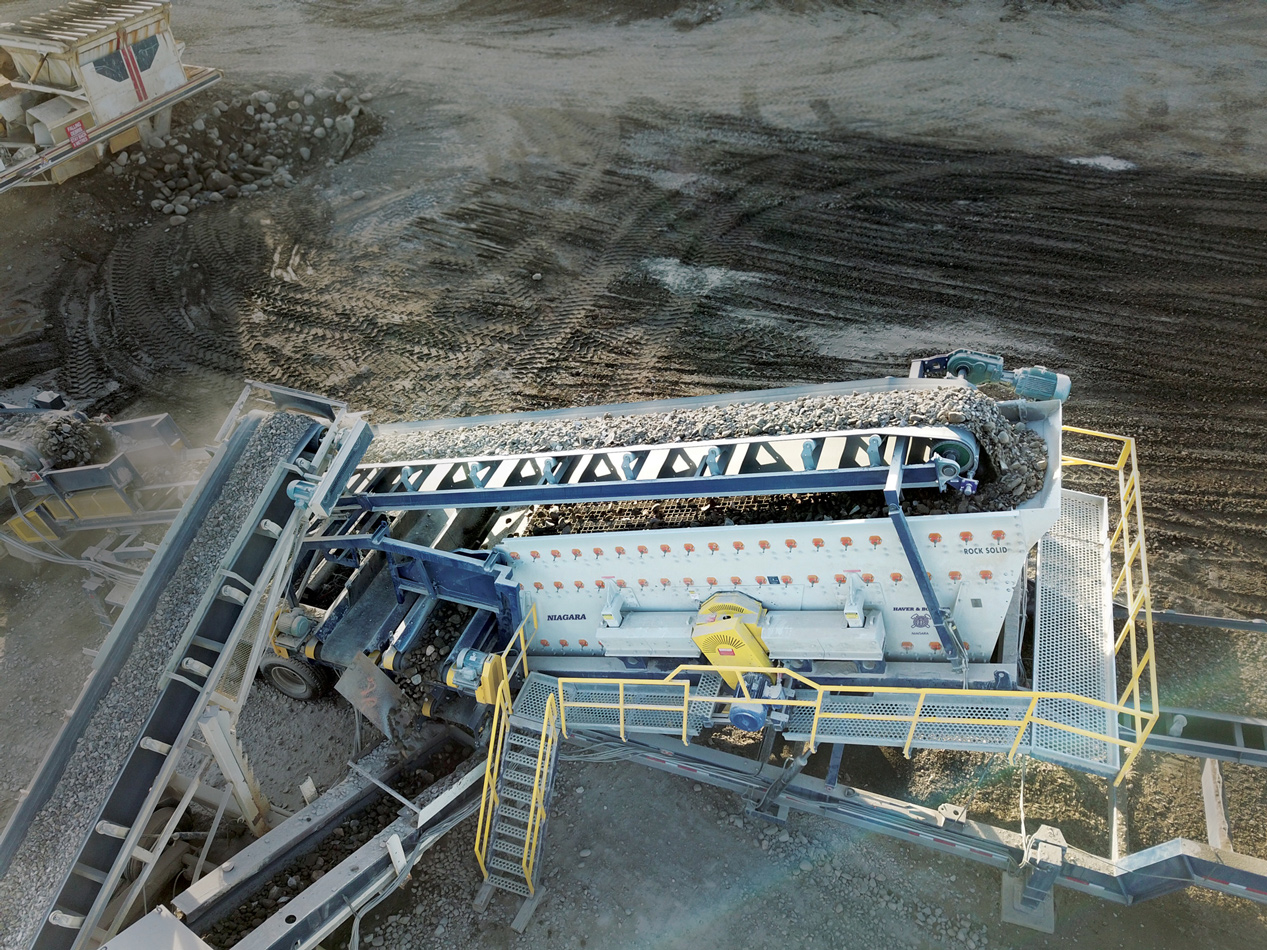
What does an operation do when its profits are buried in millions of tons of sand and its equipment needs to be portable enough to move on a moment’s notice? For some aggregates operations, that is a daily task.
One producer in Saskatchewan manages five pits. One of their quarries is especially unique in that it is far deeper than most pits. The average quarry in the region drops 10 to 30 feet. This quarry, however, is more than 100 feet deep. Profits are a challenge because though crews sift through more than a million tons of material every year, only about 200,000 to 300,000 tons is sellable aggregates for concrete and asphalt. In most circumstances, the quarry would also sell the sand, but because they are too far from large sand-buying markets, they are only able to sell about 50,000 tons a year, severely limiting profitability.
In one of its pits, the producer had been using two portable vibrating screens, but the equipment wasn’t holding up to conditions, causing decreased performance and productivity. The sandy environment required screening equipment that not only produced maximum amounts of sellable rock, but also stood up to blinding and surging to eliminate material contamination. The existing machines regularly bogged down, leading to sand going through the crushers and contaminating the sellable material, resulting in wasted product and lost profit. In order to maximize yields, the operation used screen media with opening sizes as large as 7, 8 and 9 millimeters and overloaded the screens with as much as 5,000 tons of material a day. The larger opening sizes meant smaller rock — about 5- to 8-percent of the sellable rock — was falling through with the sand the operation considers waste material. The issue cost about $200 an hour in production losses.
Production rates and lost revenue were only compounded by increased maintenance costs. The sand caused the vibrating screens to wear quickly and require nearly continuous replacement of screen media. Crews needed to change screen media every two weeks, resulting in 2- to 3-hours of downtime and 1,000- to 1,500-tons of lost production for each change-out.
The operation began discussions with Haver & Boecker Niagara to find a solution. They explained their operational needs and we worked to design a plant to fit their unique requirements.
Our engineers custom-built a chassis around the 6- by 20-foot, three-deck Niagara F-Class, factoring in the desired tonnage and the material that the operation processes to determine what the machine’s stroke should be, the speed and general mounting guidelines. Additionally, we equipped the portable plant with a specially sized jaw crusher on the chassis. The producer also asked that the bottom deck of the vibrating screen be end-tensioned. In the company’s operation, the design results in longer lasting screen media and 30 percent more productivity than side-tensioned machines.
The finished system was inclined rather than horizontal like many portable systems, allowing for a higher production capacity. The machine included a hydraulic system to lift and position the vibrating screen at the optimal angle. The F-Class utilizes a base frame that attaches to the chassis. Crews use the hydraulic system to set up the portable vibrating screen in less than 30 minutes, with the entire plant — including conveyors and other peripheral equipment — taking about half a day. The same task can take around two weeks for fixed equipment.
When the F-Class portable plant arrived at a quarry, they found the single vibrating screen increased aggregates production by about 25 percent, even as rain came and went. The improved screening action allowed the operation to maintain needed production rates while using screen media with an open area of about 4 millimeters, preventing waste of the smaller sellable material the company lost while using larger open area screens.
Screen media change-outs went from every two weeks to every six weeks — saving the operation $10,000 a month. Replacement times on the end-tensioned bottom deck — which requires the most change-outs — dropped from 2- to 3-hours each screen media change-out to only a half an hour. Replacement times for the top two decks stayed about the same. Haver & Boecker technicians helped choose the best screen media combination for his application, which has helped improve wear-life and reduce contamination.
Have a unique screening application? We would like to hear it! Contact us today to learn more about the mineral processing solutions we offer at info@haverniagara.ca.
Our global network of experience allows us to solve the most unique problems.
Florian Festge, Haver & Boecker Managing Partner